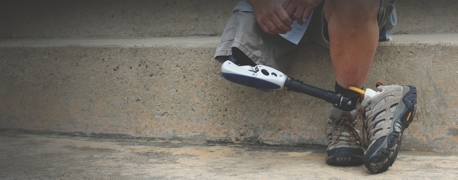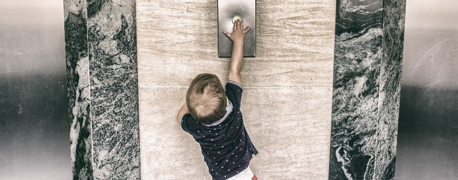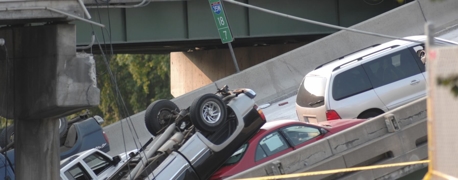The Invisible Risk at Home: A Parent’s Guide to Carbon Monoxide

Every year, hundreds of families are affected by something they can’t see, smell, or taste: carbon monoxide. Often called the “silent killer,” carbon monoxide (CO) is a colorless, odorless gas that, when inhaled, can quickly lead to serious illness or death. Because many household appliances—such as furnaces, stoves, water heaters, and even clothing dryers—produce carbon monoxide, it’s important that everyone, including parents, understands the risks.
What Is Carbon Monoxide?
Carbon monoxide is a colorless, odorless, tasteless gas that is produced when certain fuels—such as gasoline, natural gas, oil, propane, wood, or charcoal—burn incompletely. This can occur in a variety of household items, including gas stoves, furnaces, water heaters, fireplaces, and vehicles. When these things are poorly maintained, improperly vented, or used in enclosed spaces, such as inside a home or garage, CO can accumulate to dangerous levels without any warning.
Because carbon monoxide is undetectable by human senses, people often don’t realize they’re being exposed until symptoms set in—or until it’s too late. This is what makes CO so deadly: without a working carbon monoxide detector, there are no visible or sensory cues to alert a person to danger.
What Makes Carbon Monoxide So Dangerous?
Carbon monoxide affects the body by interfering with its ability to transport oxygen. When inhaled, CO enters the bloodstream and binds to hemoglobin, the molecule in red blood cells that normally carries oxygen. CO binds to hemoglobin with 200 times the strength of oxygen, forming a compound called carboxyhemoglobin. This essentially blocks oxygen from being delivered to the brain, heart, and other organs.
At low levels, CO exposure can cause flu-like symptoms. At higher levels, it can cause unconsciousness, permanent brain damage, or death within minutes. What makes it even more hazardous is that symptoms may develop gradually, allowing a person to become incapacitated before they even realize something is wrong.
Why Children Are More Vulnerable
Children are particularly susceptible to carbon monoxide poisoning for several physiological and behavioral reasons. First, they have higher metabolic rates and breathe more rapidly than adults, which means they inhale more air and, therefore, more carbon monoxide per pound of body weight. Their bodies also have less oxygen reserve and are still developing, making them more sensitive to toxins that restrict oxygen delivery.
To make matters worse, children often can’t articulate their symptoms clearly. A baby who is dizzy or nauseous might simply seem fussy or lethargic, which can easily be misattributed to many other things, from teething to mild illness. In cases of chronic low-level CO exposure, the symptoms may appear as persistent fatigue, poor concentration, or developmental delays, which are difficult to diagnose in younger children without considering environmental causes.
Unborn babies are also at a heightened risk. When carbon monoxide enters the bloodstream of a pregnant woman, it can pass through the placenta and enter the unborn baby’s blood supply as well. This does not always happen, and when it does, it doesn’t always happen right away. However, once CO does enter the bloodstream of an unborn baby, it remains in the baby’s blood for longer than it would in an adult. Carbon monoxide exposure in pregnant women does not always lead to complications, though it has been correlated with preterm birth, fetal brain damage, and fetal death.
How Common Is Carbon Monoxide Poisoning?
Carbon monoxide poisoning is more common than most people realize. According to the CDC, more than 400 people in the U.S. die every year from unintentional carbon monoxide poisoning. About another 100,000 people are treated in emergency rooms nationwide for CO exposure and about 14,000 are hospitalized annually. This means that, on average, more than 38 Americans are hospitalized every single day due to carbon monoxide exposure.
These incidents peak during winter months, when people use gas furnaces, space heaters, and fireplaces to stay warm—often in homes that are sealed tight against the cold. Despite modern building codes and increased public awareness, CO poisoning remains a persistent threat, especially in older homes, rental units without proper safety measures, and in low-income households that rely on alternative heating sources during power outages.
Symptoms of Carbon Monoxide Poisoning in Adults & Children
Carbon monoxide poisoning can manifest in different ways depending on the level and duration of exposure, the age of the individual, and their overall health. Early symptoms often mimic those of a viral infection, which is why CO poisoning is sometimes misdiagnosed.
Common symptoms in adults include:
- Headache
- Dizziness or lightheadedness
- Nausea and vomiting
- Fatigue or weakness
- Shortness of breath
- Chest pain
- Confusion
- Blurred vision
- Loss of consciousness (in severe cases)
In children, symptoms may also include:
- Unexplained irritability or fussiness
- Trouble feeding or eating
- Lethargy or unusual sleepiness
- Vomiting without diarrhea or fever
- Poor coordination or delayed response times
- Fast or irregular heartbeat
One of the hallmark warning signs is that symptoms tend to improve when the person leaves home and return when they go back inside. If you notice any of these signs in yourself or your child, seek immediate medical attention. Carbon monoxide poisoning is a medical emergency, so do not wait to get help if you think that you or someone in your family has been exposed.
The Long-Term Effects of Carbon Monoxide Exposure
Not all carbon monoxide poisoning cases result in immediate death or hospitalization. In fact, many families are exposed to low but harmful levels of CO over a period of days or weeks, leading to chronic symptoms and long-term health complications.
Some of the potential long-term effects of CO exposure include:
- Cognitive impairments, such as memory loss, confusion, brain fog, and difficulty concentrating
- Changes in mood or behavior, including pronounced irritability, depression, anxiety, and social withdrawal
- Neurological decline, including symptoms that mimic Parkinson’s disease, such as tremors and/or rigidity
- Arrhythmias, heart failure, heart attack, pulmonary edema (excess fluid in the lungs), and other cardiovascular problems
- Chronic kidney disease, liver dysfunction, adrenal insufficiency, and other issues with various bodily functions and systems
These effects can occur even in individuals who recover from acute poisoning. In some cases, neurological symptoms appear days or even weeks after the exposure ends—a condition known as delayed neurological sequelae.
Essential Carbon Monoxide Safety Tips for Parents & Families
Carbon monoxide poisoning is a real concern every parent should be aware of, but it’s also entirely preventable with the right precautions.
You can significantly reduce the risk by following these practical steps:
- Install carbon monoxide detectors on every level of your home, especially near sleeping areas. Choose detectors with battery backup and digital readouts when possible.
- Test all carbon monoxide detectors monthly and replace batteries every six months, even if the device hasn’t chirped.
- An easy tip to remember this task: change the batteries at daylight savings time, or pick two holidays six months apart, like New Year’s Day and the 4th of July, to replace your CO detector batteries.
- Replace carbon monoxide detectors every 5 to 7 years or sooner, according to the manufacturer’s instructions.
- Have heating systems, water heaters, and any gas-burning appliances serviced annually by a certified technician.
- Never use a gas oven, portable heater, or grill to heat your home.
- Don’t run vehicles or generators in a garage, even if the garage door is open.
- Make sure fireplaces, chimneys, and flues are clean and properly vented.
- Keep all appliance vents clear of snow, leaves, or other blockages.
Parents should also educate older children on what carbon monoxide detectors sound like when they go off, as well as what to do (go outside) if it happens.
Carbon Monoxide Detectors: What Parents Should Know
Carbon monoxide detectors are a critical first line of defense when it comes to keeping your home and family safe. However, these devices are only reliable if they’re properly manufactured, correctly installed, and adequately maintained. It’s important to not only make sure that your carbon monoxide detectors are working with regular tests and battery replacements but also to choose the right type of CO detector, have it professionally installed, and stay up to date on any product recalls.
When it comes to carbon monoxide detectors, here are key facts every parent should know:
- Legal requirements vary by state and locality, but many areas mandate CO detectors in homes, apartments, and schools where fuel-burning appliances, such as oil and gas furnaces, are used.
- There are several different options to choose from, including plug-in, battery-powered, and hardwired CO detectors. Choose the type that works best for your home and backup power needs.
- Combination smoke and carbon monoxide detectors are available, but they must be tested for both functions regularly. They should also be correctly installed, ideally by a professional, to ensure proper function.
- Many CO detectors have built-in systems that cause the device to “chirp” or beep when it’s time to replace the batteries. However, these systems can fail. Always replace the batteries every six months, even if the device hasn’t indicated it’s time.
- Mount detectors at knee height (which is the typical breathing level for sleeping people) or on the ceiling, depending on manufacturer instructions.
- Know the alarm’s sound and what to do if it goes off: rouse family members, leave the house, call 911, and seek fresh air immediately.
What If a Detector Fails?
Carbon monoxide detectors are not infallible. Several models have been recalled over the years due to design flaws or sensor failures. For example, in 2021, Kidde recalled approximately 226,000 combination smoke and CO alarms because they failed to alert consumers to hazardous levels of carbon monoxide, according to the Consumer Product Safety Commission (CPSC).
If a defective carbon monoxide detector fails to go off—or goes off too late—and a person is injured or killed as a result, the manufacturer could be held liable. Product liability laws exist to protect consumers from harm caused by unsafe or faulty devices, and families affected by CO exposure due to a defective detector may have grounds for a legal claim.
Carbon Monoxide Is Dangerous, But It’s Possible to Reduce the Risk
While the risks of carbon monoxide exposure are real, there are certain safety measures parents—or anyone—can take to make their homes safer for everyone. By installing carbon monoxide detectors, regularly testing them, and changing the batteries frequently, as well as having fuel-burning appliances regularly inspected by professionals and immediately replacing any recalled CO detectors, you can dramatically reduce the risk.


